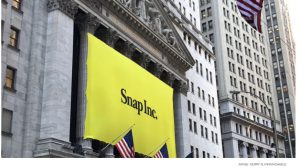Kimberly Jaindl
Social Media as a Management Information Systems Challenge—and Opportunity
This week we continued exploring the intersection of social media, content and data. Our LinkedIn guest speaker emphasized how important data is to the company’s vision. For more on that vision and what LinkedIn is doing to develop the Economic Graph, hear from LinkedIn CEO Jeff Weiner:
We also explored why the proliferation of content and data presents a unique Management Information Systems challenge—and how four companies have turned that challenge into an opportunity through Marketing Cloud offerings.
From among the Big Four Marketing Cloud providers, Adobe is currently recognized as the leader of the pack. Here’s the extended video we watched in class:
You can see more on Adobe’s Summit On-Demand page, with videos highlighting how companies such as T-Mobile and National Geographic have embraced the idea of delivering experiences that are:
- Personal
- Consistent
- Elegant
- Everywhere you are (Omnichannel!)
Technology Connecting Social Influencers and Marketers
On the heels of this week’s discussion about social media and influencer marketing, news broke that software company Adobe is testing out a new product built just for that purpose.
Called Fleek, this tool offers marketers a new way to recruit and manage video influencers for their campaigns. The advantage for brands, Adobe says, is that Fleek offers the ability to “engage directly” with influencers.
Google “Social Media Influencer Agency” and you’ll quickly understand why this is a likely a core element of the Fleek value proposition! PS: Can’t *not* think of this classic meme…
Is YouTube the Social Influencer’s Dream Platform?
As discussed in our March 22 class, social media influencers appear to be favoring YouTube over Snapchat—in large part, because YouTube caters to its Creators.
YouTube has built an entire digital playbook for Creators, as well as a downloadable PDF for Brands. And that’s just for starters—there’s also a whole Academy and in-person studio workshops.
As with most of our previous discussions, successful Creators have one major thing in common: They create compelling content that resonates with their audiences. For example, the Casey Neistat video we teased in class…
Learn more about Casey’s success and his recent partnership with Samsung.
Facebook Awards Now Reflect Facebook Reactions
Remember our March 8 discussion about Facebook valuing reactions over likes, and why that’s important to brands? (Hint: Deeper audience insights… higher return on ad spend… and potentially new, innovative ad products)
Looks like Facebook is doubling down on that position: AdAge reports that Facebook is changing its awards this year, asking the best work in categories named Laugh, Cry, Wow, Love and Act.
Don’t forget the other implications of Facebook’s reactions: Users care more about stories they react to than stories they like, and are more engaged with that type of content.
With “Love” being the most common Facebook reaction, should we expect the most entries in this category? Time will tell…
Snapchat’s Parent Company Goes Public

Hear about Snapchat’s very special IPO Day lens? Source: Mashable.
Following our lively discussion about the opportunities and challenges facing Snapchat, parent company Snap, Inc. had its first day of trading on Thursday. According to CNBC, its closing price of $24.48 was 44 percent above the $17 offering price set late Wednesday.
Another interesting nugget from the article:
“This looks and smells like Twitter to me,” said Brian Hamilton, a co-founder of Sageworks, a financial analysis and valuation firm. “I’m concerned that investors will have to wait a very long time, if ever, before they see any meaningful appreciation.”
While we wait, you can check out the full SnapStats graphics reviewed in Wednesday’s class, as well as the six Snapchat metrics that matter for brands.
Organizing for Social Media Success: Remember the 4 Ps!
Now that we’ve covered the four Cs of social media marketing (Connection, Community, Context & Content), it’s time to move on to the four Ps of social business governance: People, Policy, Process & Practice.
Check out Altimeter Group’s complete Best Practices Report, Social Business Governance: A Framework to Execute Social Business Strategy.
And, get additional information on Social Media’s Real Legal Issues as discussed in class. This one, especially, should prove handy when it comes time to reviewing your notes ahead of the last exam. (Hint, hint…)
What Makes for an Effective Social Media Policy?
During our March 1 class meeting, we’ll be discussing how businesses organize for social media success. Much of the conversation will center on social business governance, which is the integrated system of people, policies, processes, and practices that ensures effective management of social business at scale.
To help inform our discussion, we’ll be reviewing a few sample social media policies in class:
Get ready to do some real-time analysis!
Winter Is Coming: Memes Meet Responsive Marketing
This week we talked about social media, real-time and responsive marketing, with a dash of crisis management thrown in for good measure. It was all about living in—and planning for—the moment.
Many of you considered things like winter weather and Valentine’s Day for your responsive marketing concepts. Since we didn’t get to play email roulette, here’s one concept in particular that stood out (in part because it was reminiscent of a recent favorite from the Philadelphia Police.)
Brand and objective: Red Cross; Driving up sales/awareness
Everyone knows there’s a snow storm tomorrow but are you prepared? What if you run out of food? Or if the lights go out? We have you covered with all your emergency response needs. Check out what we have in our store at https://www.redcrossstore.org/item/SIF4001DND
And now, from the Philly Police:
2" is nothing to get excited about-don't start the Game of Cones early.Shovel & share-Winter is here, & there's a long way to go.#NoSavesies pic.twitter.com/E2CILrUaXX
— Philadelphia Police (@PhillyPolice) January 5, 2017
Even more recently:
..and we'll takedah.Saving parking spots after shoveling is illegal. Call 911, and we'll take care of it- Howbowdah? #NoSavesies #FellowKids pic.twitter.com/EaN3nAAxjC
— Philadelphia Police (@PhillyPolice) February 8, 2017
tbh, @PhillyPolice are crushing it on Twitter.
Also, since we were crunched on time for the crisis management discussion… Here’s your stoplight key to classifying a crisis:
Common types of issues and crises all savvy social media managers should consider:
- Product safety or quality
- Workplace safety or quality
- Human resources or labor
- IT or Cyber security
- Ethics or misconduct
- Man-made or natural disaster
- POTUS tweets
Wendy’s Demonstrates Social Media Listening & Response
During our Feb. 1 class meeting, we discussed three questions that inform social media listening & response strategies:
- Who are you listening to?
- What are you listening for?
- What are you going to do about it?
Wendy’s provided an interesting—and entertaining—example of a social listening strategy in action. We took a look at the behind-the-scenes conversation with Wendy’s social media manager to understand her philosophy on customer burns.
We also talked about how other brands handle social listening and what happens when businesses don’t take action in response to their customers. Thanks to United Airlines for this classic example (note the number of views!):
And on a lighter note: Here’s the Pret a Manger rap battle example.
PSA: Don’t forget to study up on the six ways social listening can help brands, and the three audiences all brands should be listening to!
H&M Demonstrates Attributes of Compelling Social Media Content
During our Feb. 1 class meeting, we discussed four traits of compelling social media content:
- Relatable: Audiences can identify with the content
- Digestible: Audiences can easily scan it; content is visual, not too text heavy
- Timely & Relevant: Content connects to current events or conversations the audience is engaged in or aware of
- Incites Emotion: Content makes the audience feel something (e.g., joy, sorrow, fear, hate, love)
The participation activity challenged you to find examples of compelling social media content and describe how it exemplified these traits. Two students selected H&M’s video content—one of which we discussed thanks to email roulette (above) and the other here:
Do you think H&M considered the PESO (Paid, Earned, Shared, Owned) model with this content? How might this content fit into a broader, integrated campaign?






